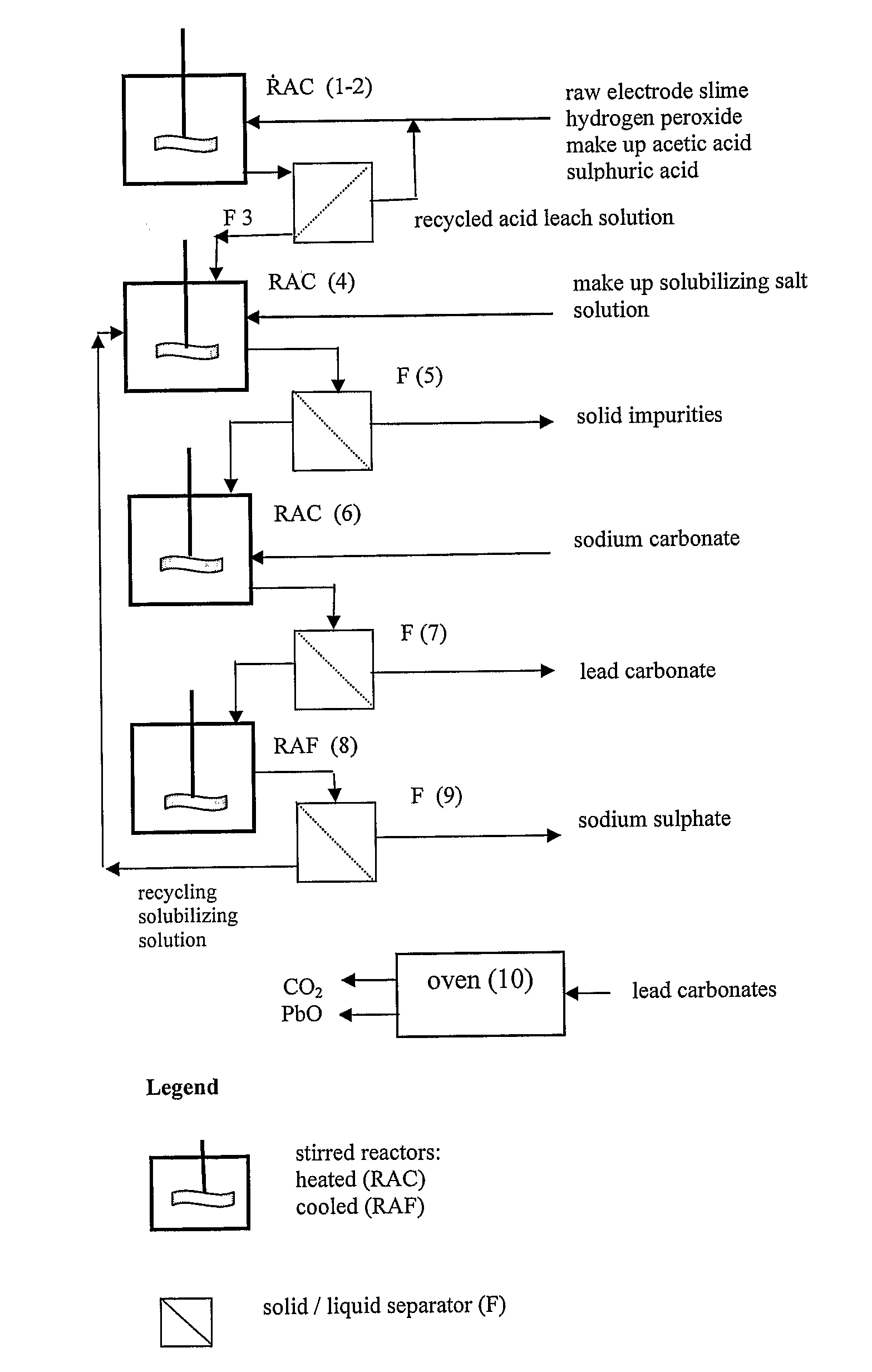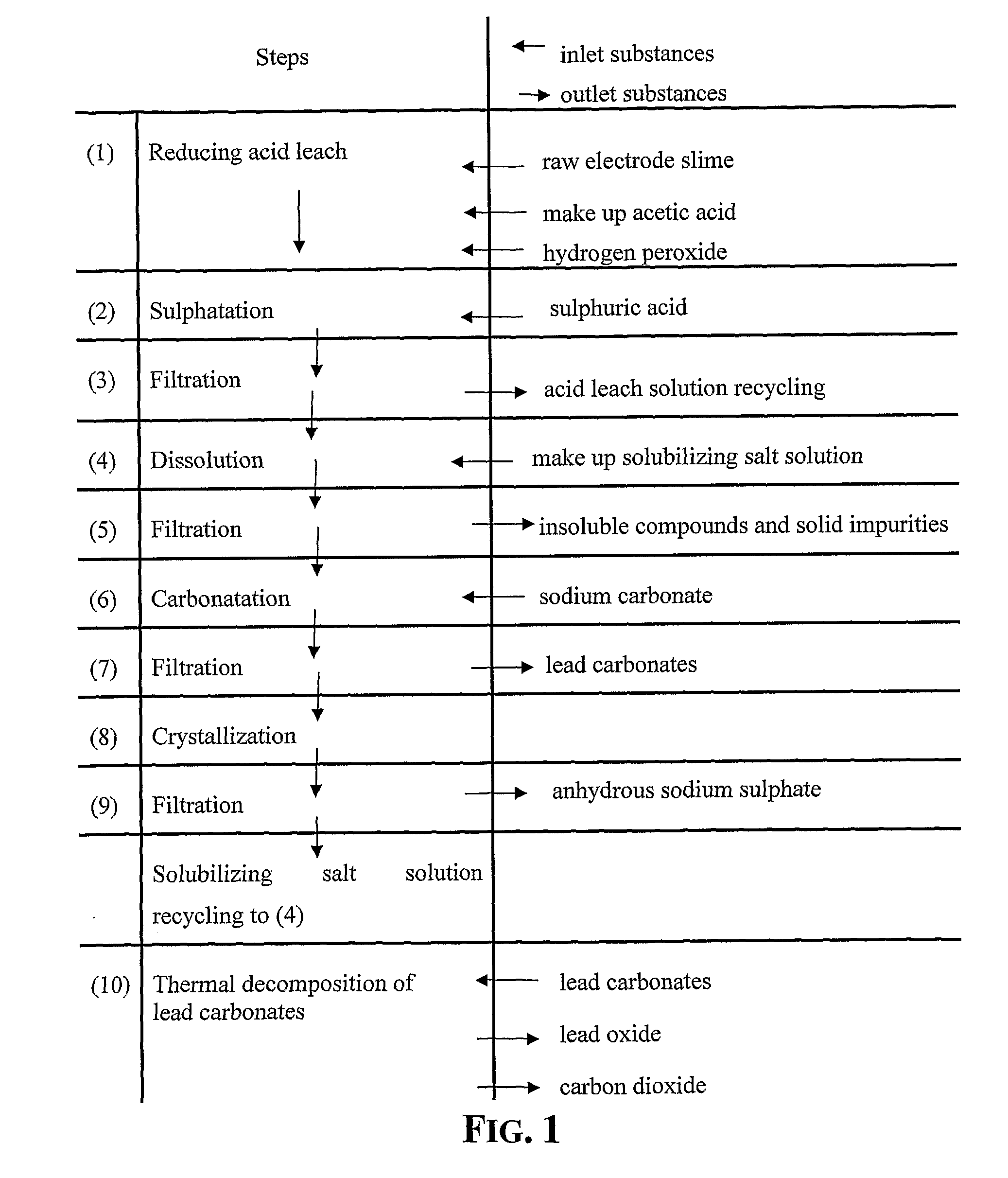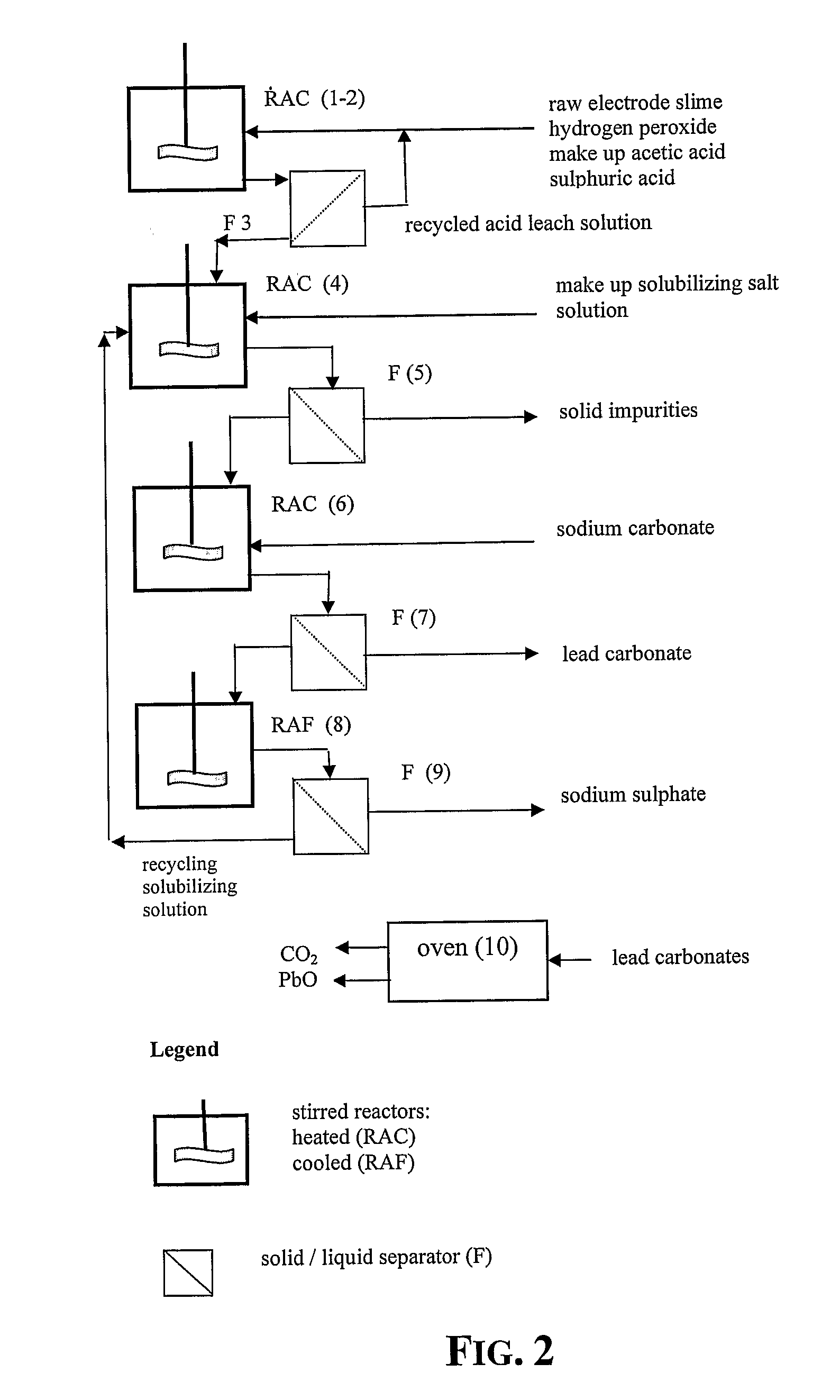Recovery of lead in form of high purity lead carbonates from spent lead batteries incl. electrode paste
- Summary
- Abstract
- Description
- Claims
- Application Information
AI Technical Summary
Benefits of technology
Problems solved by technology
Method used
Image
Examples
example 1
[0048]15 g of recovered dried electrode paste having a lead content, expressed as metal equivalent, of 72% was treated under stirring for 10 minutes with 100 ml aqueous solution of acetic acid at 15% by weight, at the temperature of 50° C. After 10 minutes hydrogen peroxide at 32% by weight has been added dropwise until obtaining a no longer increasing clarification of the suspension.
[0049]The stirring of the suspension was maintained for further 35 minutes and thereafter sulphuric acid at 96% by weight was added to the clarified suspension. The hot suspension was then filtered and the recovered solid phase was rinsed with a small quantity of deionized water whilst the recovered limpid solution was found to be practically free of lead and was thereafter employed for acid leaching a fresh 15 grams amount of dried electrode paste at the same treatment conditions.
[0050]This sequence of steps was repeated 24 times and the repeatedly recycled acid leach solution did not show any impairme...
example 11
[0060]5 g of lead carbonate salts mixture obtained according to the process described in Example 1, were heated in oven up to 350° C. and maintained at this temperature for 60 minutes.
[0061]At the end of the treatment 4.17 g of a pulverulent substance of yellow color were recovered. The yellow substance proved to be constituted by α lead oxide of purity above 99.99%.
example 12
[0062]5 g of lead carbonate salts mixture obtained according to the process described in Example 7, were heated in oven up to 450° C. and maintained at this temperature for 60 minutes.
[0063]At the end of this treatment 4.17 g of a pulverulent substance having an orange color were recovered. The substance proved to be constituted by β lead oxide of purity greater than 99.99%.
[0064]To 3 g of lead oxide were added water and pure glycerin in order to obtain a mixture having the following composition by weight:
[0065]lead oxide 91%, water 7%, glycerin 2%.
[0066]The mixture was accurately mixed obtaining a paste with the consistency of a stucco. The paste was placed in a sealed container and after 12 hours its consistency was verified. The paste was found to practically retain the same consistency for as long as 72 hours from its preparation.
PUM
| Property | Measurement | Unit |
|---|---|---|
| Temperature | aaaaa | aaaaa |
| Temperature | aaaaa | aaaaa |
| Temperature | aaaaa | aaaaa |
Abstract
Description
Claims
Application Information
 Login to View More
Login to View More - R&D
- Intellectual Property
- Life Sciences
- Materials
- Tech Scout
- Unparalleled Data Quality
- Higher Quality Content
- 60% Fewer Hallucinations
Browse by: Latest US Patents, China's latest patents, Technical Efficacy Thesaurus, Application Domain, Technology Topic, Popular Technical Reports.
© 2025 PatSnap. All rights reserved.Legal|Privacy policy|Modern Slavery Act Transparency Statement|Sitemap|About US| Contact US: help@patsnap.com



